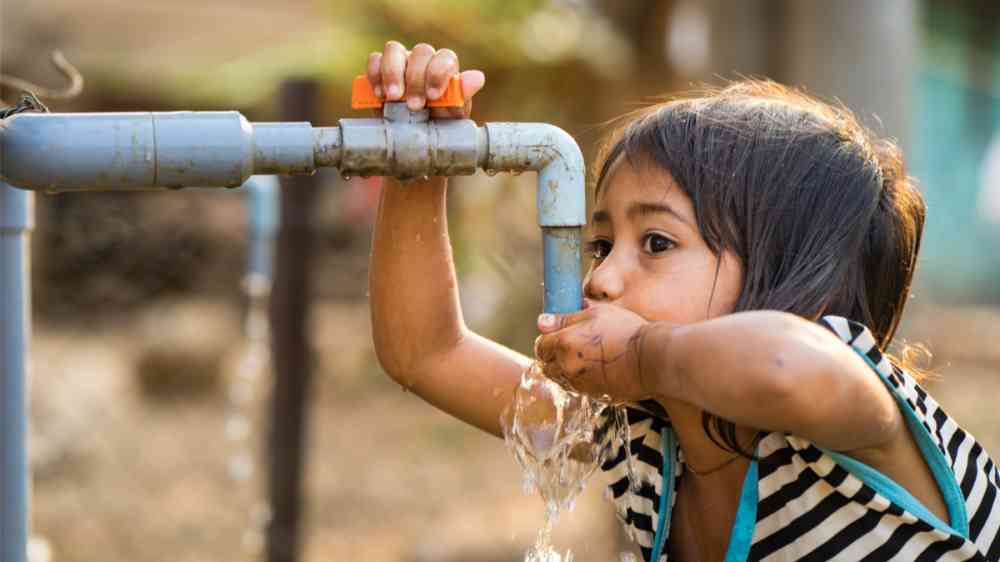Water is getting scarce. Here’s how three Pacific island states are securing their access

Climate risks are on the rise for the Asia-Pacific region, threatening social and economic development gains. The region grapples with inadequate basic services, infrastructure gaps, and environmental degradation. Amid these challenges lie opportunities to build resilience and assure livability, while limiting the carbon footprint.
Three small island developing states (SIDS) in the Pacific – Solomon Islands, Fiji and Tonga – have risen to the challenge of securing water to accelerate climate actions and contribute to sustainability.
Solomon Islands: Overcoming water scarcity in the South Pacific
The consequences of climate change cast a shadow on the future of Solomon Islands: the country’s climate is expected to be characterized by intense rainfall and extreme droughts by 2050.
Those climate change impacts will be worsened by three existing significant problems: a scarcity of freshwater sources, a lack of sanitation infrastructure, and insufficient, aging water systems.
The challenge
The impacts of climate change worsen Solomon Islands’ vulnerabilities:
- Freshwater scarcity,
- Lack of sanitation infrastructure, and
- Insufficient, aging water systems
Additionally, urban population growth has led to decreasing access to basic urban services such as water supply, sanitation, solid waste collection, and drainage.
To cope with these challenges, local authorities set up a project to provide a climate-resilient water supply and improved sanitation in the Greater Honiara Area and five outlying towns. The $92 million project is funded in part by a concessional loan and grant from ADB, with co-financing from the European Union and World Bank. By upgrading water treatment facilities, building two new reservoirs, rehabilitating 10 km of water supply pipes with added leak detection, and adding new metered connections, the new measures reduce water loss by more than 30 %, while increasing supply capacity and security.
The project also improves sanitation services: adding new pump stations and a reed bed wastewater treatment plant, repairing aging pipes, and expanding the existing network to include 3,000 new households.
In total, the initiative helps to conserve water, to protect communities against an increasingly uncertain future. Furthermore, better access to water and sanitation services creates health, social and environmental benefits for those living in informal communities, through improved menstrual hygiene awareness, and through greenhouse gas reduction.
Fiji: A fresh approach to water for a future with rising tides
Fiji is another Pacific nation at the frontline of climate change. The islands are expected to experience rising sea levels and increasing droughts over the next few years, causing new water supply challenges. The capital, Suva, is especially affected, struggling to keep pace with recent streams of migration to the city.
Rising to the challenge, Fiji has put in place an investment program to provide clean drinking water for the inhabitants of Suva and improve the management of wastewater in the city.
The $405 million program introduces a new raw water intake on the Rewa River with a water treatment plant, a pumping station and reservoir. The project also aims to upgrade the 31 existing wastewater pumping stations, enabling the network to expand to service 15 % more of Suva’s households.
The ADB-funded project also has health, economic and environmental benefits. The improvements reduce water contamination, lowering health risks from waterborne diseases. Economically, the project reduces water losses and increases supply capacity, lowering costs for users and meeting the needs of the growing population. Finally, the project reduces emissions by 26,000 tCO2e per year through water savings, sewer systems, and the capture of methane from an anaerobic digester.
The Words into Action: Nature-based Solutions for Disaster Risk Reduction guide offers practical, expert-informed guidance on setting up and implementing NbS, especially for disaster risk reduction (DRR), but also for climate change adaptation.
Tonga: Urban resilience on the frontline of climate change
The goal
99.9 %
of the population will have a reliable water supply through upgraded piped distribution networks
A secure water supply for 99.9 % of the population – this is the goal of an ongoing urban resilience project in Nuku’alofa, capital of Tonga. Like other cities in the region, Nuku’alofa is struggling with urban growth that outpaces the capacity of public water services, alongside dire climate change predictions.
The effects of climate change are severe for Tongans. They are particularly affected by flooding, rising sea levels and storm surges. 80 % of Tonga’s population, and most of its critical infrastructure, is located in flat, low-lying coastal areas that are directly exposed to these hazards. Without immediate action, most of Nuku’alofa could be underwater by 2100.
The project, supported by an $18 million ADB grant, aims to develop flood management, water and sanitation infrastructure, and furnish the city with a resilience and climate strategy. To reach this goal, the project upgraded piped distribution networks and drainage systems which improve the resilience of 40 hectares of land in flood-prone locations. Furthermore, the project contributes to public health benefits as improved sanitation and hygiene reduce exposure to waterborne diseases.
By implementing these disaster risk management strategies at the community level, the projects targets those most vulnerable to climate change impacts.
These three case studies were taken from the 100 Climate Actions from Cities in Asia and the Pacific publication (ADB, 2021).